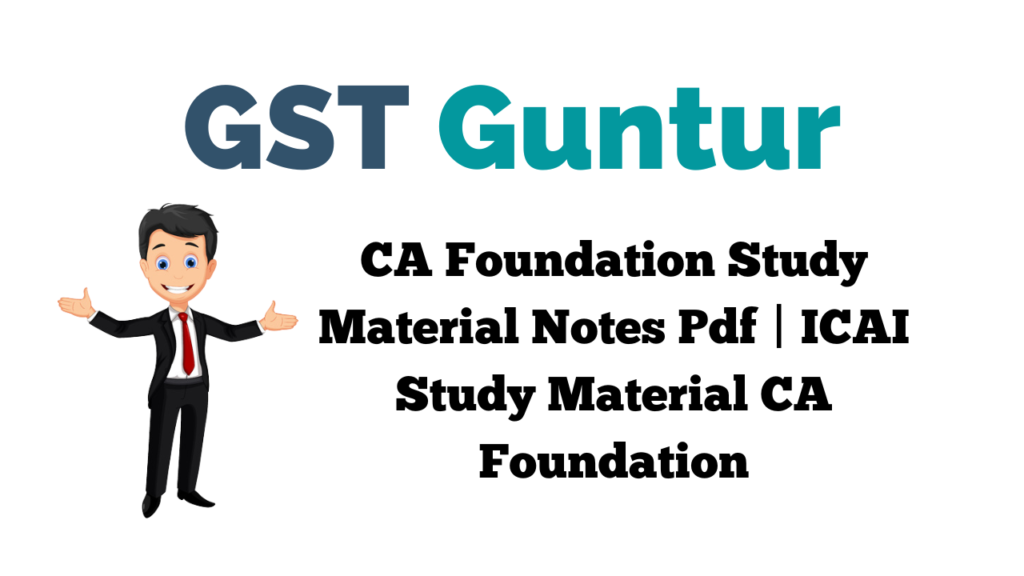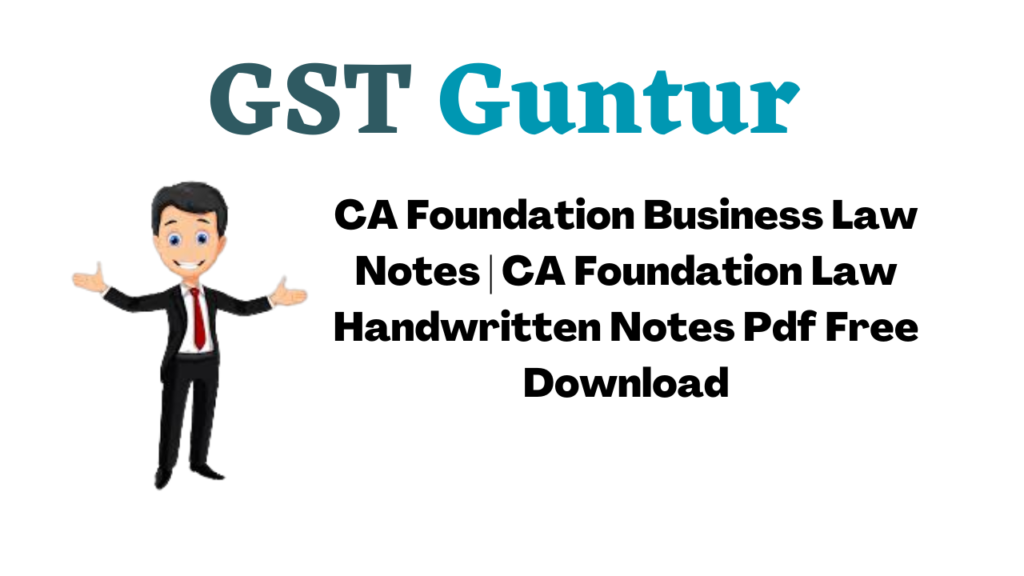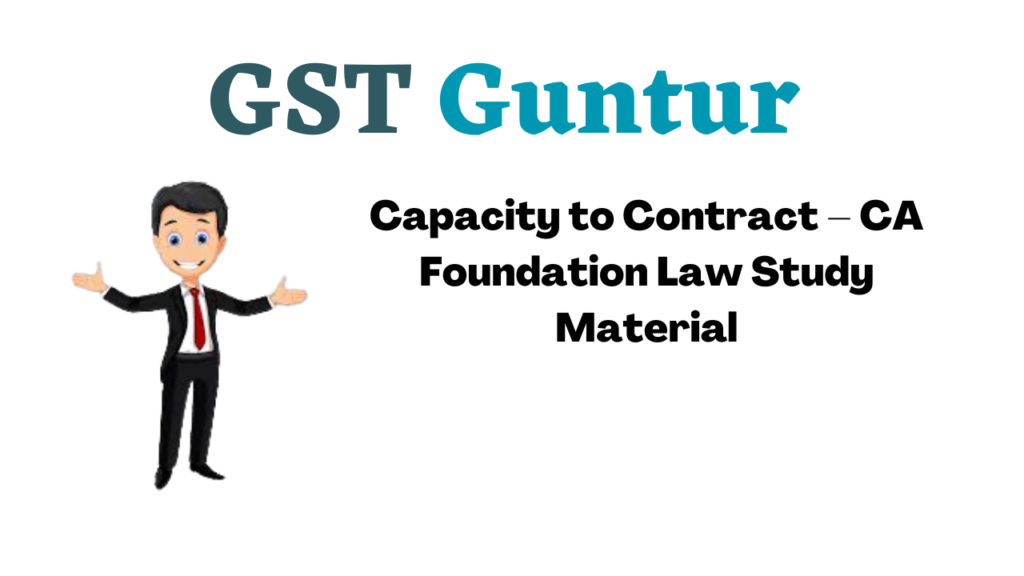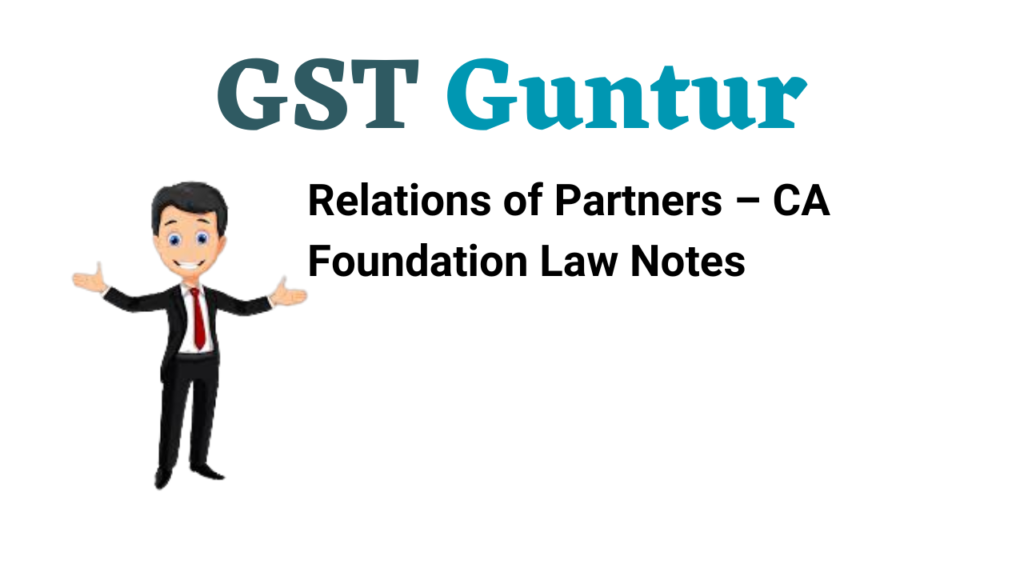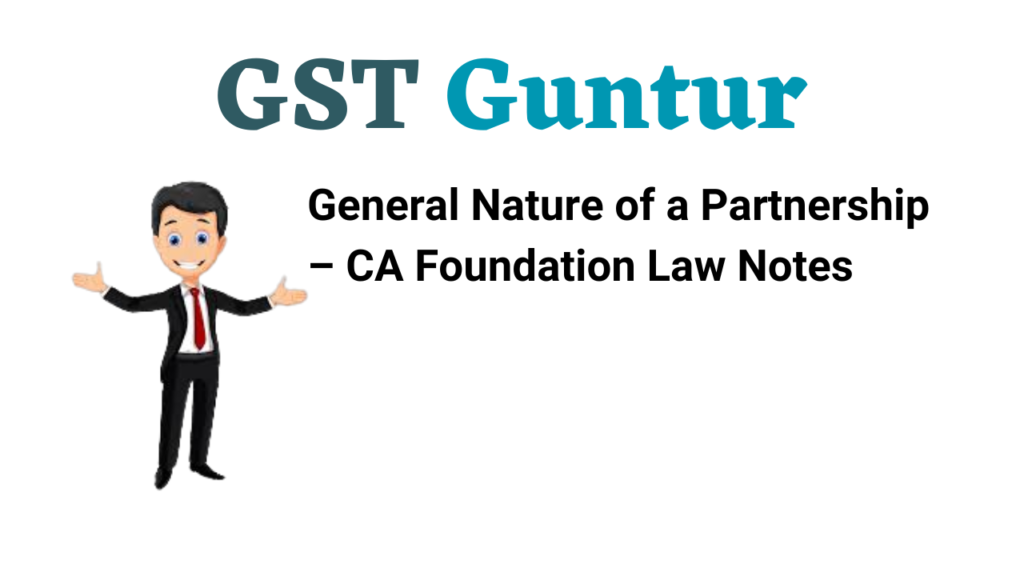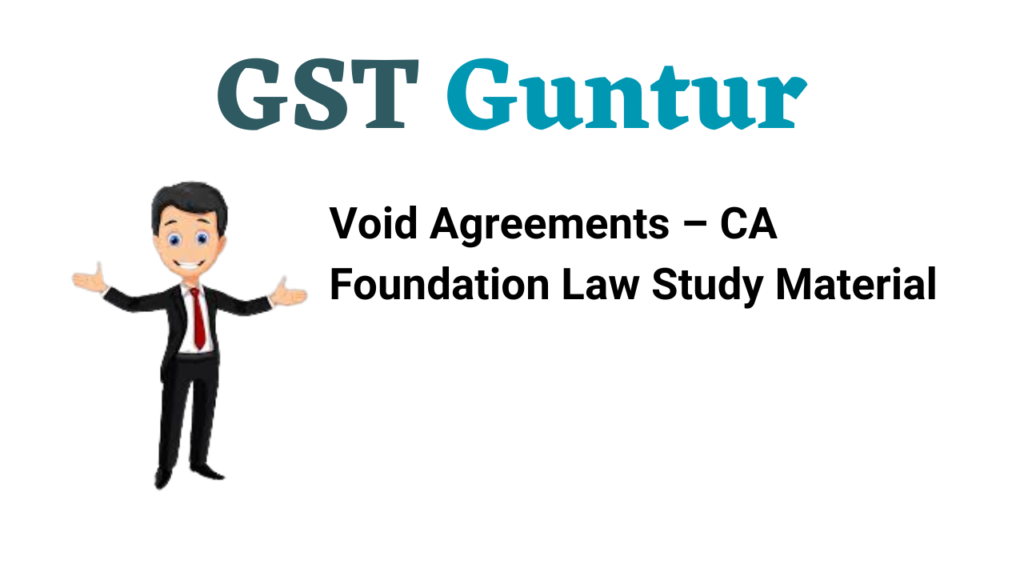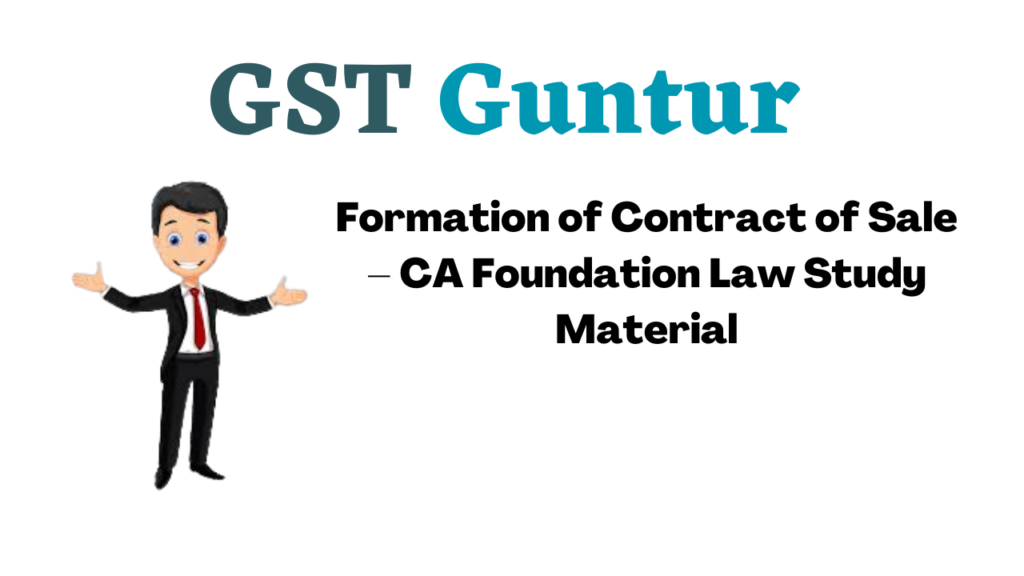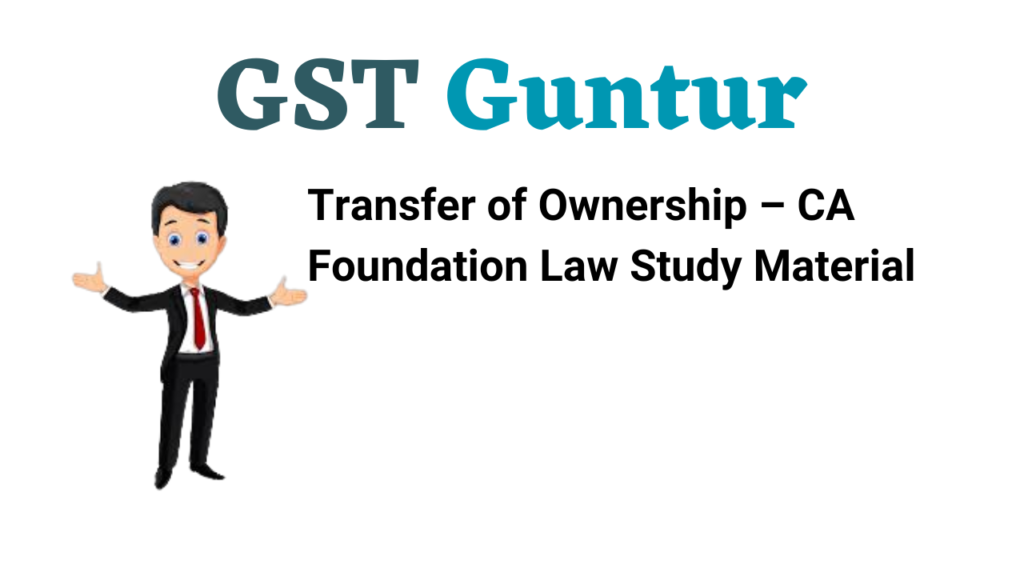Browsing through General Nature of a Partnership – CA Foundation Law Notes help students to revise the complete subject quickly.
General Nature of a Partnership – CA Foundation Business Law Notes
Introduction:
Prior to the Partnership Act, 1932 the law of partnership was covered by the Indian Contract Act, 1872. Due to rapid growth in trade and commerce and growing industrialization, a need was felt to have a separate law on partnership. This led to the enactment of the Indian Partnership Act, 1932. It extends to the whole of India except the State of Jammu and Kashmir. It came into force on the 1st day of October, 1932, except section 69, which come into force on the 1st day of October, 1933.
The Partnership Act is not exhaustive. Where the Partnership Act is silent on any point, the general principles of the law of contract apply (section 3)
A What Is Partnership?
Section 4 of the Indian Partnership Act, 1932, lays down that “Partnership is the relation between persons who have agreed to share the profits of a business carried on by all or any one of them acting for all.”
Partnership v. Firm:
- Persons who have entered into partnership with one another are called individually “Partners ” and collectively “a firm”.
- The name under which their business is carried on is called the “firm name”.
- A firm is a collective name of partners. It is a physical unit. It is concrete. While partnership is merely an abstract legal relation between the partners.
- Partnership is an invisible tie, which binds the partners together, and the firm is the visible form of those partners who are thus bound together.
The legal status of a firm: A firm is not a legal entity. It is merely a collective name for the individuals, who have entered into partnership. It does not have a separate legal entity distinct from the partners who compose it. As a firm is not a legal entity, there cannot be partnership of firms.

What Are The Essential Elements of Partnership?
All the following elements must be present if an association of persons is to be called a partnership:
1. Association of two or more persons:
There must be at least two persons to form a partnership. As far as the maximum number of partners, in a firm is concerned, the Partnership Act is silent. However, Section 464 of the Indian Companies Act, 2013 lays down that where the firm is carrying any business, the number of partners should not exceed 50 (It can be increased upto 100). If the number of maximum partners exceeds this limit, the partnership becomes an illegal association of persons.
2. Agreement between persons:
According to Section 5 of Partnership Act, the relation of partnership arises from contract and not from status. Thus, the members of a Hindu Joint Family carrying on a business, or the co-owners of a business are not ‘ partners’ because H U F and co-ownership are created by operation of law and not by contract. The agreement of partnership may be expressed or implied.
3. Business:
Partnership can be formed only for the purpose of carrying on some business. Section 2(b) of Partnership Act says that the term ‘business’ includes every trade, occupation or profession.
Thus, an association created primarily for charitable, religious and social purposes are not regarded as partnership. Similarly, when two or more persons agree to share the income of a joint property, it does not amount to partnership; such relationship is termed as co-ownership.
4. Sharing of Profits:
The division of profits is an essential condition of the existence of a partnership. The sharing of profits is only a prima facie evidence of the existence of partnership, and this is not the conclusive test of it.
5. Business carried on by all or any of them acting for all. (Mutual Agency):
The underlying or cardinal principle which governs partnership is the mutual agency relationship amongst the partners. It means each partner is the agent of the firm as well as of the other partners. The business of the firm may be carried on by all the partners or by any of them acting for all.
Thus, a partner is both an agent and a principal. He can bind the other partners by his acts and is also bound by the acts of the other partners. The law of partnership is regarded as an extension of the general law of agency.
“Partnership arises from contract and not from status”.
That partnership is the result of a contract and cannot arise by status is sufficiently emphasised by section 4 itself by use of the words “partnership is the relation between the persons who have agreed to share the profits of a business”.
It is clear from the definition that the partnership is of contractual nature. It springs from an agreement. The same point is further stressed by the opening words of Section 5 that the relation of partnership arises from contract and not from status.
Thus if on the death of the sole proprietor of a business the legal heirs decide to continue to carry on the business, they cannot be called as partners because there is no agreement between them. Similarly members of Joint Hindu Family business carrying on a family business cannot be treated as partners because a person becomes the member of the business by birth and not by agreement. Sec.5
On the death of a partner, his legal heirs do not automatically become the partners of the firm. If the surviving partners agree to admit the legal heirs into partnership, then a fresh agreement to that effect will have to be made. Thus from the above it is clear that partnership always arises out of a contract and not from status.
Who may be partners of a firm?
According to the definition of partnership in section 4, a partnership is an agreement. All those persons who are competent to contract can become partners. As per section 11 of Contract Act, a person is competent to contract if he is a major, of sound mind and is not disqualified from contracting by any law.
Thus a partner must fulfil the conditions of section 11. However, a minor u/s 30 of the Partnership Act, can be admitted to the benefits of the partnership firm with the consent of all the partners.

The Tests of A True Partnership:
According to Sec. 4, there are 4 essential elements of partnership;
- That it is the result of an agreement, between two or more persons.
- That it is formed to carry on a business.
- That the persons concerned agree to share the profits of the business.
- That the business is to be carried on by all or any of them acting for all.
If there is an express agreement between them to share the profits of a business and the business is being carried on by all or any of the acting for all there will be no difficulty, in the light of provisions of sec. 4, in determining the existence or otherwise of partnership.
But the task becomes difficult when either there is no specific agreement or the agreement is such as does not specifically speak of partnership. In such a case, for testing the existence or otherwise of partnership relation, Section 6 has to be referred. According to Sec. 6 in determining whether a group of persons is or is not a firm or whether a person is or is not a partner in a firm, regard shall be had to the real relation between the parties, as shown by all relevant facts taken together.
If all the relevant facts taken together show that all the four essential elements are present, the group of persons doing business together will be called a partnership. The tests of a true partnership were first laid down by the House of Lords in the case of Cox v. Hickman (1860) 8 II L.C. 268.
In that case, a trader entered into arrangement with creditors to manage his business and to use the profits for paying off the creditors. It was held that the creditors were not partners of the business. Sec. 6 of the Partnership Act is a comprehensive restatement of the rule laid down in this case.
The relevant factors to be considered for determining whether there is partnership are the conduct of parties, the mode of doing business, who controls the property, the mode of keeping accounts, correspondence, the manner of distribution of profits, etc. of the four elements, the third element, viz., sharing of profits is important but not conclusive. In the following cases there is no partnership even though there is sharing profits:
- A creditor taking a share of profits in lieu of interest and part-payment of principal.
- An employee getting a share of profits as remuneration.
- Share of profits given to workers as bonus.
- Share of profits given to the widow or children of deceased partners as annuity.
- Share of profits given to a previous owner of the business as the consideration for the sale of the goodwill (Explanation 2 to Section 6).
In all the above cases the fourth essential element of partnership (viz., agency) is absent. A creditor or any employee, or the widow and children of deceased partners cannot bind the firm by any act done on behalf of the firm. Only those who have authority to bind the firm by their actions can be called partners.
Thus, the most important test of partnership is agency and authority. This is the cardinal principle of partnership law. If this element of mutual agency is absent, then there will be no partnership.
KD Kamath & Co.:
It was held by the Supreme Court that the two essential conditions need to be satisfied in relation to the partnership:
- There should be an agreement to share the profits as well as the losses of business, and
- The business must be carried on by all or any of them acting for all, within the meaning of the definition of Partnership under section 4.
If the above-said conditions are satisfied and even if the exclusive power and control was vested in one partner or if the bank account can be operated by only one partner, then also there will be a partnership between the parties.
Satranjan Das Gupta v. Dasyran Murzamull (SC):
It was held that there was no partnership between the parties because of the following conditions:
- Parties have not retained any record of terms and conditions of the partnership.
- Partnership business has maintained no accounts of its own, which would be open to inspection by both the parties.
- No account of the partnership was opened with any bank.
- No written intimation was conveyed to the Deputy Director of Procurement with respect to the newly created partnership.
Difference Between Partnership Firm And Various Entities:
(A) Distinction between Partnership & Company:
A company is a legal entity distinct from its shareholders. While a firm is a compendious name for all the partners. Both are forms of business organization:
| Sr. no. |
Company |
Partnership Firm |
| 1. Formation |
A company comes into existence only after registration under the Companies Act. |
A partnership is formed by mutual agreement of all the partners. Registration is not compulsory. |
| 2. Legal Status |
A company has a separate legal entity distinct from its members. |
A partnership is collection of individuals. It does not have a separate legal entity. |
| 3. Number of Members |
(i) The minimum number of persons required to form a company is 2 for private company (other than One Person Company) and 7 for public co. |
(i) The minimum number of persons required to form a partnership is 2. |
|
(ii) There is no maximum limit to the number of members in the case of public company. A private company cannot have more than 200 members. |
(ii) As per Companies Act, 2013 the number of partners in a partnership firm carrying on any business should not exceed 50 persons. |
| 4. Liability of Members |
The liability of the members is limited. |
The liability of partners is unlimited. |
| 5. Agency of Members |
A shareholder is not an agent of the company nor he is agent of other shareholders |
Every partner is the agent of the firm and his partners for the purposes of the business of the firm. |
| 6. Transfer of shares |
Shares can be transferred without the consent of other members. In a private company there are restrictions on transfer of shares. |
No partner can transfer his share or interest in the firm without the consent of his co-partners. |
| 7. Stability |
A company has perpetual succession. The death or insolvency of a member does not affects its existence. |
A partnership comes to an end on the death and insolvency of its partners. |
| 8. Management |
There is separation of ownership from management. The shareholders do not actually take part in the management of the company. The Board of Directors manage the company. |
A partnership firm is managed by partners themselves. |
| 9. Powers |
The general powers of the company are regulated by Memorandum of Association. It is difficult to change the objects. |
The partnership agreement (deed) regulates the mutual rights and duties of partners only. |
| 10. Statutory Obligations |
A company is required to comply with various statutory obligation. Such as compulsory audit, the holding of the meetings, the keeping of proper account books and registers, filing of annual returns etc. |
A partnership firm is not required to comply with any such statutory obligation. |
| 11. Interest |
A member has no interest in the assets of the company. |
A partner has an interest in assets of the partnership. |
(B) Distinction between Partnership and Co-Ownership:
Co-ownership’s like joint purchasers, co-tenants, co-heirs are different from partnerships. Co-owners may share profits, by virtue of their status and not by virtue of a contract; One co-owner is not the agent of other co-owner; co-owner may transfer his shares to a stranger but a partner cannot do so.
The following are the points of distinction:
1. Formation:
Partnership always arises out of contract. Co-ownership may arise either from agreement or by the operation of law, such as by inheritance.
2. Sharing of profit:
In a partnership, profit must have to be shared, but in the case of a co-ownership, it does not necessarily involve sharing of profits.
3. Agency:
In a partnership, a partner is the agent of the other partners, but in the case of co-ownership, a co-owner is not the agent of other co-owners.
4. Lien:
A partner has a lien on the partnership property for outlay or expenses or a loan advanced to the firm, whereas a co-owner has no such lien.
5. Transfer of interest:
A share in the partnership may be transferred only with the consent of all other partners. Co-owner may transfer his interest in the property without the consent of other co-owners.

(C) Distinction between Partnership and Joint Hindu Family:
There are some common features in partnership and Joint Hindu Family. Both are forms of business organization and there is sharing of profits. The important points of distinction are :
1. Mode of creation:
The partnership is created by agreement, whereas joint family is established by law. A person becomes a member of a joint family by birth.
2. Death:
Death of a partner brings about dissolution of partnership. But the death of a member of a Joint Hindu Family does not give rise to dissolution of the family business. HUF has continuity till its partition.
3. Mutual Agency:
In a partnership, every partner can bind the firm by his acts. However, in HUF, only the Karta has the authority to contract on behalf of HUF.
4. Management:
In a joint family, only Karta has the right to manage the business. In partnership, all the part¬ners have the right to take part in the management of the firm.
Note:
the amendment in the Hindu Succession Act, 2005, entitled all adult members, whether male or female, to become coparceners in a HUF. They enjoy equal rights of inheritance due to this amendment, On 1st February, 2016, Justice Najmi Wazari, in a judgment allowed the eldest female coparcener of an HUF to become the Karta.
5. Liability:
The liability of partners in a partnership concern is unlimited, joint and several. The liability of members of a joint Hindu family except the Karta is limited only to the extent of their share in the business of the family.
6. Calling for accounts:
On the partition of joint family a member is not entitled to ask for the accounts of the family business. But a partner can bring a suit against the firm for account on the dissolution of the firm.
7. Registration:
Registration of partnership is essential for the maintenance of suits both against the partners as well as outsider but a joint family business need not be registered at all.
8. Number of members:
In a partnership the number of partners is limited to 50, but in the case of joint family business there is no such restriction.
9. Minor’s position:
A minor can be a member of a Hindu joint family, but a minor cannot be a partner in a firm. However, he can be admitted to the benefits of partnership with the consent of all the partners.
10. Governing Law:
A partnership is governed by the Indian Partnership Act, 1932, while joint Hindu family is governed by Hindu Law.
11. Share in Business:
Share in a partnership is defined by an agreement between partners. However, in HUF, share of coparceners is not definite. His interest is fluctuation which is capable of being enlarged by deaths in the family and diminished by births.
(D) Partnership and Club or Society:
Partnership is different from a club or a society. In case of a club or a society, the two essential ingredients viz. intention to share profits and an intention to constitute one member as agent for another member are lacking.
The following are the points of distinction:
1. Definition/meaning:
A club or a society is an association of persons formed with the object, but to promote some beneficial purposes such as improvement of health or providing recreation for the member etc. A partnership on the other hand is an association of persons also, but formed for earning profits from a business carried on by all or any one of them acting for all. These persons share the profit so earned as per their agreement.
2. Relationship:
Persons forming a club/society are called members, while persons forming a partnership are called partners. Members of a club are not agents for the other member’s while a partner is an agent for other partners.
3. Interest in the property:
A member of a club/society has no interest in the property of the club/society in the manner a partner has in the property of the firm.
4. Dissolution:
A member leaving a club or a society shall not affect the existence of the club, while retirement of a partner from the firm does effect the existence of the firm.
(E) Partnership and Association:
An association evolve due to social cause where there need not be a motive to earn and share profits. Further, there may not be a contract of mutual agency unlike as in case of a partnership.

Types of Partners:
1. Active partner:
An active partner is one who actually participates in the business of the firm. He is also known as actual or ostensible partner.
2. Dormant or sleeping partner:
The dormant or sleeping partner joins the firm by agreement but do not take any active part in the business. The liabilities are same as of active partners.
3. Nominal partner:
A nominal partner lends his name to the firm. The firm gets advantage of his reputation and name.
- He does not contribute capital nor does he participate in the partnership business.
- He is liable to the third parties for the act of the firm.
4. Sub partner:
Where a partner agrees to share his profits in the firm with a third person, that third person is called a sub-partner. Thus a sub-partner is a transferee of a share of a partner’s interest in a firm. Suppose P, the owner of 25% share of firm transfers 10% of his share to Q. Q will be called a sub-partner.
- A sub-partnership is a partnership within a partnership
- A sub-partner has no obligations towards the firm and
- He does not carry any liability for the debts of the firm.
- He cannot bind the firm by his acts.
- A sub-partner does not get any right against the main firm to take part in or to interfere with the business of the firm or to examine the accounts of the firm. So long as main partnership continues, he is also not allowed to ask for the accounts of the firm. He has a right to claim the agreed share from the actual partner with whom he has entered into sub-partnership.
- The sub-partner does not become a partner in the original firm. Such partners are not counted for the maximum number of partners. Sub-Partner does not become a partner in the original firm. Such partners are not counted for the maximum number of partners.
5. Partner in Profits only:
He is a partner who is entitled to share of profits only without being liable to any losses. He is liable to the third parties for all acts of the profits only.
6. Outgoing Partner:
A partner who is leaving the firm and rest of the partners continue to carry on the business is called as a retiring partner.
7. Incoming Partner:
Incoming partner is a partner who is admitted as a partner into an already existing firm. He should be admitted with the consent of all the existing partners.
8. Partner by estoppel or holding out:
The circumstances under which a person may be held liable for the acts of a firm, without being its partners
Doctrine of ‘holding out’:
Holding out means “to represent”. Strangers, who hold themselves out or represent themselves to be partners in a firm, whereby they induce others to give credit to the partnership are called “partners by holding out” or partnership by estoppel. The object of the above stated rule, obviously, is to prevent frauds to which creditors would otherwise be exposed.
The principle of ‘holding out’ has been recognised by Sec. 28 of the Indian Partnership Act:
“Anyone who by words spoken or written or by conduct represents himself, or knowing permils himself to be represented, to be a partner in a firm, is liable as partner in that firm to any one who has on the faith of any such representation given credit to the firm, whether the person representing himself or represented to be a partner does or does not know that the representation has reached the person so giving credit”.
In order to hold a person liable as a partner-though in fact he may not be one on the basis of holding out, it must be established:
- That by words or conduct he represented himself to be a partner or knowingly permitted himself to be represented as a partner to anyone and,
- That the other person acting on the faith of the representation gave credit to the firm.
Effects of holding out:
The partner by estoppel or holding out becomes personally liable for the acts of the firm. But he does not become a partner in the firm and is not entitled to any rights or claim upon the firm. An outsider, who has given credit to the firm thinking him to be a partner can hold him liable as if he is a partner in that firm.
Example:
A retired businessman of some repute assumed the honorary presidentship of the business of certain persons who requested him for the same. Held, he was liable for the debts of the firm to those who gave credit to the firm in the bona fide belief that he was a partner. [Lake v. Duke of Argyll, (1844) 6 Q.B. 477].

Types of Partnership:
Partnership can be classified as below:
1. Partnership at will (sec. 7)
A partnership is called a partnership at will –
- When the partnership is not for a fixed period of time and
- When no provision is made as to when and how the partnership will come to an end.
Thus, in partnership at will there is no provision in the contract between the partners for the + duration of their partnership. Secondly, there should be no provision in their contract for the determination [i.e. ending] of their partnership. If either of these provisions exist, it is not partnership at will. The essence of partnership at will is that it is open to either partner to dissolve the partnership by giving notice in writing to all other partners.
The firm is then dissolved from the date mentioned in the notice as the date of dissolution, and if no such date is mentioned, then from the date of the communication of the notice (sec. 43), If a partnership is to be dissolved by mutual agreement only, then it will not be a partnership at will.
Examples:
- Anil and Mukesh agree to do trading of laptops for a period of 3 years. This partnership is to be terminated after the expiry of 3 years. This is not a partnership at will.
- Ram, Laxman and Bharat agree to carry on a business in partnership subject to the condition that the partnership may be terminated by mutual agreement. In this case, a specific i mode is prescribe to determine the partnership, thus it is not a partnership at will.
2. Particular partnership (sec. 8):
A particular partnership is one which is formed for a particular adventure or a particular undertaking. Such a partnership is usually dissolved on the completion of the adventure or undertaking. For example, forming a partnership for construction of a bridge.
3. Partnership for a Fixed period:
Where a provision is made by a contract for the duration of the partnership, the partnership is called as a partnership for a fixed period. Such partnership comes to an end after the expiry of the fixed period.
4. General Partnership:
Where a partnership is constituted with respect to the business in general, it is called a general partnership. A general partnership is different from a particular partnership. In particular partnership, the liability of the partners extends only to that particular adventure or an undertaking but it is not so in case of a general partnership.

Partnership Property (Secs. 14 & 15):
What constitutes a partnership property depends upon the agreement between the partners? It is open to the partners to agree among themselves as to what is to be treated as the property of the firm and what is to be separate property of one or more partners.
They can convert by mutual agreement, partnership property into separate property of an individual partner and vice versa. In the absence of any such agreement, the property of the firm according section 14, means
- property originally brought into the common stock of the firm by the partners
- property acquired in the course of the business with money belonging to the firm
- the goodwill of the firm.
Unless the contrary intention appears, property and rights and interests in property acquired with money belonging to the firm are deemed to have been acquired for the firm.
Application of the property of the firm (sec. 15):
Subject to contract between partners, the property of the firm shall be held and used by the partners exclusively for the purposes of the business.
Goodwill:
1. Goodwill is not defined in the Partnership Act. Goodwill may be described as the advantage which is acquired by a firm from the connection it has built up with its customers and the reputation it has gained.
2. “The goodwill of business is the whole advantage of the reputation and connection formed with customers together with the circumstances whether of habit or otherwise, which tend to make such connection permanent. It represents in connection with any business of business product the value of attraction to customers which the name & reputation possesses.”
3. Goodwill is part of the property of the firm (Sec. 14).
Sale of goodwill after dissolution (sec. 55):
The rules relating to sale of goodwill upon dissolution of a firm are as follows:
1. In settling the accounts of a firm after dissolution, the goodwill shall, subject to contract between the partners be included in the assets, and it may be sold either separate or along with other property of the firm. [Sec. 55(1)],
2. The rights of the buyer and seller of the goodwill are as follows:
→ Seller’s rights: After the sale of goodwill, the seller i.e., the partner of the dissolved firm,
- may carry on a business competing with that of the buyer of goodwill, and
- may advertise such business. [Sec. 55(2)].
But subject to agreement between him and the buyer, the seller of goodwill that is, partners of the dissolved firm may not:
- use the firm name,
- represent themselves as carrying on the business of the old firm, and
- solicit the customers of the old firm. [Sec. 55(2)]
(b) Buyer’s rights: On the purchase of goodwill the buyer gets the (I) right to carry on the same business under the old name and (II) to represent himself in continuing the business and solicit former customers of the business and restrain the sellers of the goodwill from doing so.
3. But any partner of the dissolved firm may make an agreement with the buyer that such partner will not carry on a business similar to that of the firm within a specified period or within specified local limits, provided the restrictions imposed are reasonable. Sec. 55(3)
